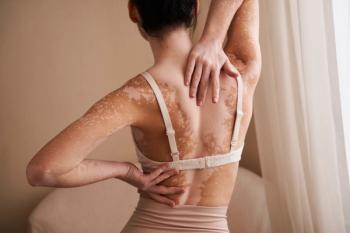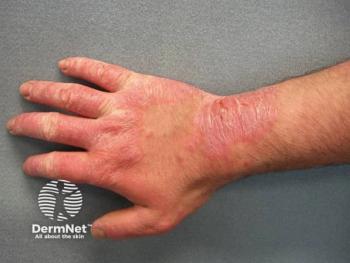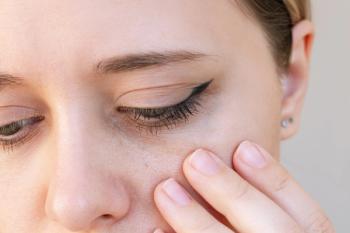
Newly Developed REACH Score Identifies Burden for Employed Patients with Chronic Wounds
Key Takeaways
- Chronic wounds affect work life, with 70% of patients taking sick leave, impacting performance and productivity.
- The REACH Score, a 17-item tool, assesses occupational impacts, showing moderate impairment and correlating with existing quality of life measures.
Nearly half of the surveyed patients identified a negative impact of their wounds on daily life, particularly at work.
A recent study has analyzed how chronic wounds affect the work life and performance of patients.1 With this new data, an updated screening tool, the REACH Score, has been developed for these highly impacted patients. Chronic wounds affect about 2.5% of the American population.2 This is the first time comprehensive data on work-life experiences has been collected for patients with chronic wounds.
The pilot study included 51 patients, all under the age of 65, with chronic wounds that hadn’t healed after at least 8 weeks. Over 52% were male, and all were currently or previously employed. Information on wound size, cause, pain, and further diagnoses was taken from patient charts at the specialized wound centers of 2 German university hospitals from January 2022 to December 2023. The types of wounds included venous leg ulcers, pyoderma gangrenosum, arteriovenous leg ulcers, and post-traumatic wounds.
Each participant answered 50 questions, which were divided into 6 categories.
- Demographics and clinical data (education, marital status, wound duration, etc.)
- Wound-related limitations (time spent on wound-related activities and reduction of working hours)
- Employment status (professional qualification, current job, weekly hours, sick leave, etc.)
- Current work conditions (sitting or standing position, amount of physical labor, cold or hot conditions, ability to take breaks, etc.)
- Social welfare system use (socio-medical advice, rehabilitation measures, or disability pension)
- Subjective disease burden (via the REACH Score and a visual analogue scale (VAS))
The 17-item REACH Score was subsequently created to assess the occupational impacts of chronic wound care. This questionnaire referred to and was validated by the existing Wound-QoL and Erlangen Life Quality Assessment (ELWA) and used a 4-level Likert scale. Mean scores could range between 1 and 4 (sum from 17 to 68), with a higher score indicating a higher burden.
About 70% of patients were or had been on sick leave in the previous 12 months due to their chronic wounds, resulting in decreased work performance. Several respondents had been on sick leave multiple times or had to reduce their working hours. However, there was a positive correlation between fewer sick days and the ability to take more breaks during the day. The most common social welfare support was occupational rehabilitation, which was utilized by 6 patients. Most surveyors did not express an interest in counseling or other related options.
Based on the REACH Score, the group showed moderate impairment (2.37). About 45% of patients considered their wound to be a burden, with a mean score higher than 2.5. Over 60% felt that their wound negatively affected their work, while 66% were concerned about their future career because of the wound. Approximately 67% felt less productive, and nearly 80% said the wound had a negative impact on their leisure time.
Patients who were or had been on sick leave had higher REACH scores (2.52) than those who were not (2.07). There was also a strong correlation between the Wound-QoL and the REACH Score (r = 0.50, p < 0.01), especially regarding pain at rest, wound duration, and time-consuming activities like dressing changes or getting to work. Patients spent an average of 5.3 hours per week in these activities, with dressing changes being the most time-consuming (2.7 hours per week). This additional time spent correlated with the higher REACH Score.
This new tool shows potential in helping to improve the quality of life for patients struggling with chronic wounds. Investigators are using this questionnaire in further research with more patients, centers, and health care providers. Future literature will also find more detailed data on the types of jobs that can be most harmful to this patient population.
“The REACH Score offers promising possibilities for screening in this particular patient population, given the limited data on the interaction between chronic wounds and occupation,” the authors wrote. “Based on the present data, quartiles can be used to provide support to the most vulnerable patients.”
References
1. Busch DA, Methner N, Azodanlou D, et al. Chronic Wounds and Employment: Assessing Occupation-Related Burden of Patients With Chronic Wounds-Results of a Pilot Study. Int Wound J. 2025;22(4):e70372. doi:10.1111/iwj.70372
2. Sen, C. K. (2023). Human wound and its burden: updated 2022 compendium of estimates. Advances in wound care, 12(12), 657-670.
Newsletter
Like what you’re reading? Subscribe to Dermatology Times for weekly updates on therapies, innovations, and real-world practice tips.



















